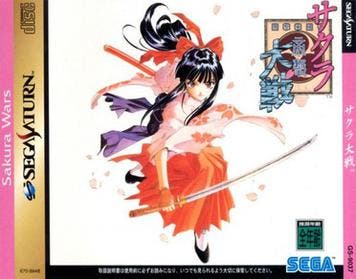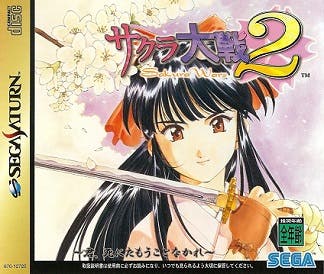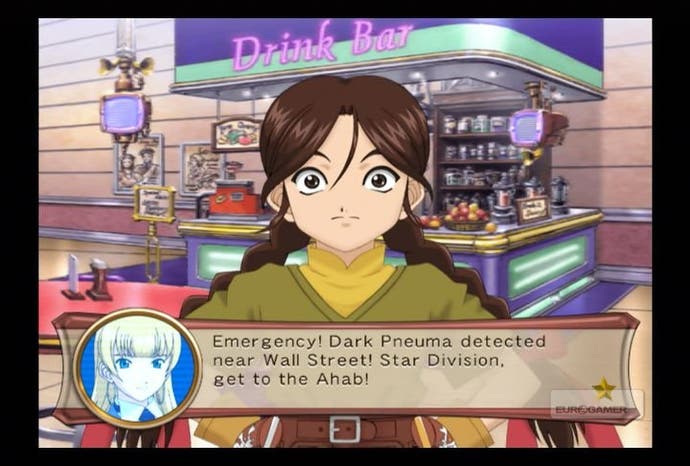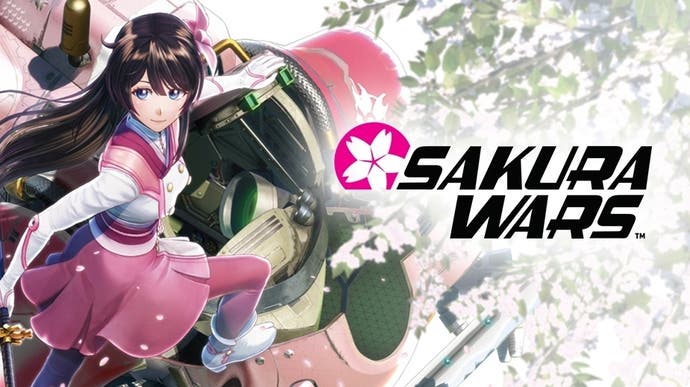An introduction to Sakura Wars, the RPG series created to save the Sega Saturn
Welcome to the biggest JRPG franchise you might not have heard of.
The history of Sega's consoles is one often written by their competitors. Right off the bat, Sega tried to follow in Nintendo's footsteps, both in terms of creating a recognisable mascot, and in offering a varied games line-up. Becoming aware of a lack of a strong RPG franchise for the Sega Saturn, Sega partnered with game developer Red Entertainment (then Red Company) to create a series that would be a hit with RPG fans. It was a feat Red Entertainment had previously achieved with Galaxy Fräulein Yuna for the TurboGrafx-16 in 1992 and, more notably, Far East of Eden (天外魔境, Tengai Makyou), a series which in the early 90s rivalled the success of the well-known Dragon Quest and Final Fantasy franchises.
Sega, hoping Red Entertainment could repeat their success, contacted Far East of Eden's creator Oji Hiroi in early 1994. Hiroi was initially reluctant to agree to a partnership, seeing as his games had until then been Sega's competitors. However, eventually he pitched them a project he had previously abandoned, thinking it too ambitious in scope - Sakura Wars.

Sakura Wars combines a lot of what made Galaxy Fräulein Yuna and Far East of Eden so popular. Notably, Far East of Eden was the first RPG with animated cutscenes and voice acting, and Sakura Wars is packed full of them. Galaxy Fräulein Yuna on the other hand lends Sakura Wars a plot element in its girls-doing-mecha-combat. Sakura Wars was going to be no less than two games in one - a tactical RPG with combat directly influenced by Nintendo's Fire Emblem series and a visual novel with dating sim elements. The story is set in an alternate Taisho-era Japan prior to the Second World War, where girls use magical powers to control mechs to uphold peace. To further aid the happiness of the public, the girls also act in the Imperial Combat Revue as a theatre troupe. The 'Sakura' in Sakura Wars stands both for the cherry blossom, the symbol of Japan, and for main protagonist Sakura Shinguji. Players never take control of Sakura or any of the other actresses, and instead play as navy ensign Ichiro Ogami.
The series didn't really double down on the dating aspect until much later, and from today's perspective it's a little uncomfortable. A man coming in to take his pick of his female subordinates isn't a storyline that's unusual for anime, but it didn't age well. Thankfully, much like Fire Emblem: Three Houses, Sakura Wars was always plot first, romance second, and it's important to note that this type of harem storyline was very popular in the late 90s.
The number of systems involved in making a combination of both choice-based visual novel and strategy game are something we now take for granted, but seemed impossible to pull off in 1994. In using both genres, Sega and Red Entertainment set out to make a "dramatic adventure", as they called it, a moniker the marketing would eventually adopt to describe the franchise. Not only that, Sakura Wars was also the first game to read your save games' previous instalments, allowing you to continue a previously started romance.
Central to the visual novel portion of the game is the so-called L.I.P.S. system. The name was chosen because of its nice sound, which is often the reason behind random English titles in Japanese, but since the question after the meaning came up a lot, the acronym "Live & Interactive Picture System" was created. L.I.P.S. is a dialogue choice system, the first of its kind with a timer that would rush you to make a choice. The second Sakura Wars game would even go a step further and change your available answers if you waited for too long and allow you to click something on the screen to unlock further dialogue options, both revolutionary ideas at the time.

Sakura Wars wasn't only supposed to be a mech RPG, but also a musical adventure, as Hiroi's initial inspiration for the game came from watching a takarazuka play. The Takarazuka Revue, named after its location in the city of Takarazuka near Kobe, is an all-female theatre company, established to counter the many traditional forms of Japanese theatre that allowed only male actors. In Sakura Wars, the real Grand Imperial Theatre in Tokyo serves as the base of operations for the Flower Troupe, both a takarazuka term and the name for the military division you join at the beginning of the game.
It was difficult to find voice actresses who could sing and also act, but Hiroi, who worked mainly in anime, wanted something similar to anime series such as Bubblegum Crisis, in which music supplied by the voice actresses was a central part to the appeal of the show. Sakura Wars was also the first game to consciously attempt to make the voice acting match the animated lip movements of each character, making both departments work in tandem.
When it came to anime talent, the search for high-profile contributors didn't end there: artist Futoshi Nagata, who would go on to work on art for titles such as Code Vein and Vanquish, designed the steampunk mechs for Sakura Wars, while manga artists Kosuke Fujishima (Oh! My Goddess, the Tales franchise) and Hidenori Matsubara (Neon Genesis Evangelion) also joined the project. In the end, Sakura Wars would become Sega's most expensive project to date, but the investment paid off: it became a sellout success, and a driving force for sales of the Sega Saturn in Japan as planned.
However, as is often the case, the game was deemed too Japanese for a Western audience and hasn't been localised to this day, save for a fan translation. Work on the sequel began almost immediately, but to tide waiting fans over, another strategy from Galaxy Fräulein Yuna was adopted, releasing an anime for the series. While the game never made it to the west, the direct to video anime and later the TV series did so in the early 2000s, and put Sakura Wars on the map with those who wanted mecha action in a cute comedy package. Since it caught the wave of mecha anime popularity in the west led by titles such as Gundam, Neon Genesis Evangelion and The Vision of Escaflowne, the anime did reasonably well globally.
In addition to the anime, the voice actresses took to the stage, becoming a real-life takarazuka troupe that would put on new shows for each new Sakura Wars release - and there were a lot of them, chief among them Sakura Taisen Columns, a Puzzle Fighter-type game with a story mode that utilised the L.I.P.S. system, and throughout the 2000s even titles designed for the Gameboy Advance, using Pokemon-style combat.

All that was still never enough to convince Sega to make an attempt at bringing the series to the west, a decision also directly linked to the poor sales of its consoles outside of Japan. While the second Sakura Wars game was still released for the Saturn and lengthened the console's lifespan in Japan at a time when western audiences had long switched to Sony's PlayStation, the Dreamcast had such a short shelf life that development on the fourth Sakura Wars game had to be rushed so that from a sales perspective it would still make sense to release it at all. A storyline was scrapped, and assets from previous games had to be reused in order to deliver the game on time. There's more romance too, but Sakura Wars 4 had initially been designed to end the series and unite Ogami with the woman of his choice, as it was clear that Sega wouldn't produce any further consoles.
However, the franchise would attempt one last hurrah in the form of Sakura Wars 5: So Long, My Love, in 2005. Developed for the Wii and later ported to PlayStation 2, Sakura Wars 5 employed a storyline originally intended for protagonist Ogami, whose story ended in Sakura Wars 4. In Sakura Wars 3, Ogami travels to Paris to assist the Combat Revue there. Red Entertainment had originally envisioned for his travels to take him to multiple parts of the world, and so Sakura Wars 5 tells the story of his nephew, taking his first steps at the Combat Revue in New York. This made So Long, My Love feel like a soft reboot for the franchise, as none of the characters from previous games make an appearance here.
While this made it seem like a bit of a cop out to longtime fans, this was finally a title that could be brought to the west - Sega was convinced both by the success of Persona 4 and the fact that Sakura Wars now used a western setting. Persona is an interesting series to consider in this context, as the series took elements from Sakura Wars - chief among them the aspect of getting to know your fellow characters and having to manage a limited amount of time to work on your skills and relationships. Sakura Wars 5 is a good game, switching between beautiful visual novel segments and 3D fights in all-new mechs, but it wasn't the success Sega was looking for, neither in Japan nor the west.
Bringing a Sakura Wars soft reboot to Western players thus constitutes a new leap of faith for Sega. looking at the success of the Yakuza and Persona franchises, they know by now that players enjoy games they previously thought of as 'too Japanese', but 'New Sakura Wars' as its simply called in Japanese, also starts off with a all-new cast and a new battle system - not even heroine Sakura is the same as before. Releasing later this month, Sakura Wars comes with new action combat but the same mix of visual novel, anime sequences and musical numbers. It did well in Japan, coming in behind Pokemon Sword and Shield during its first release weekend, but it remains to be seen if this is a one-off or the grand revival of an influential series.










